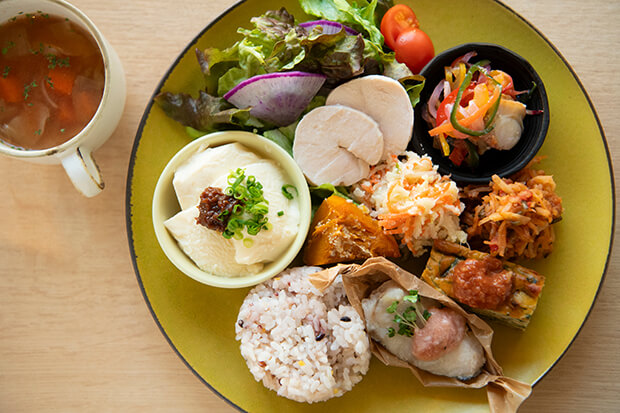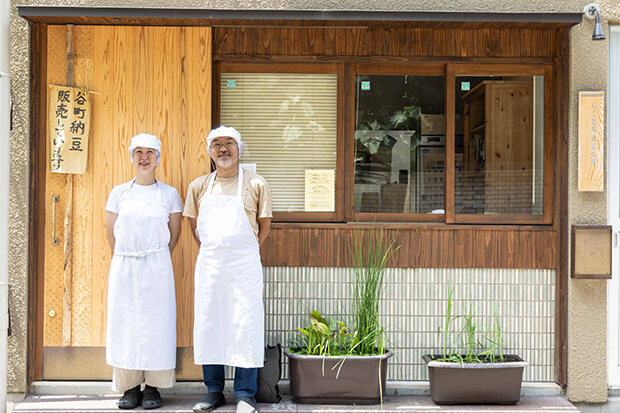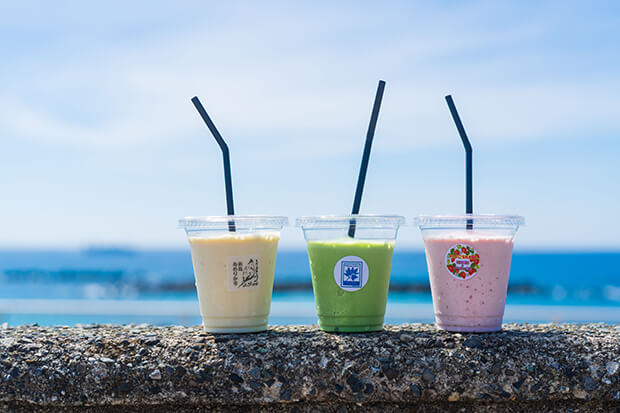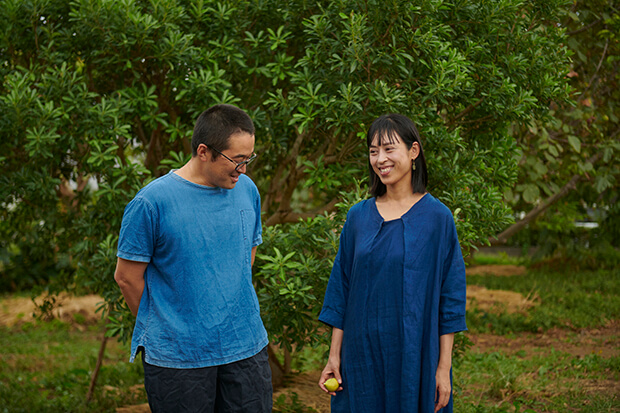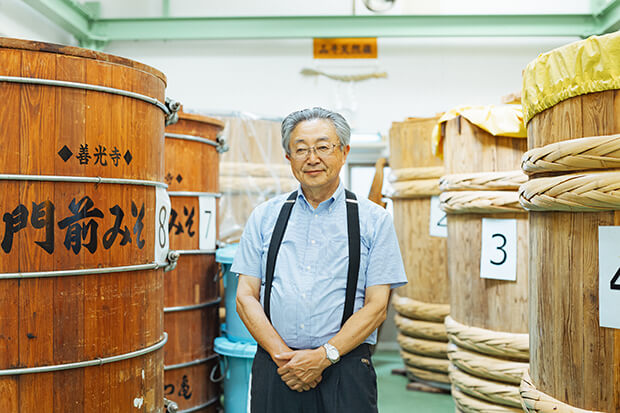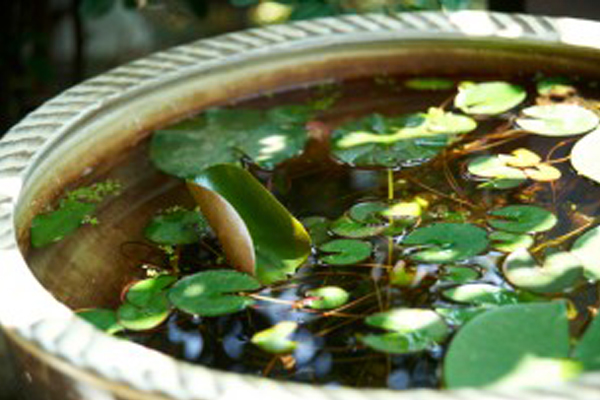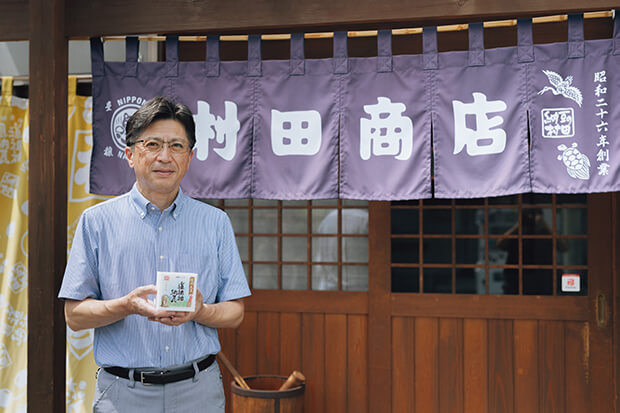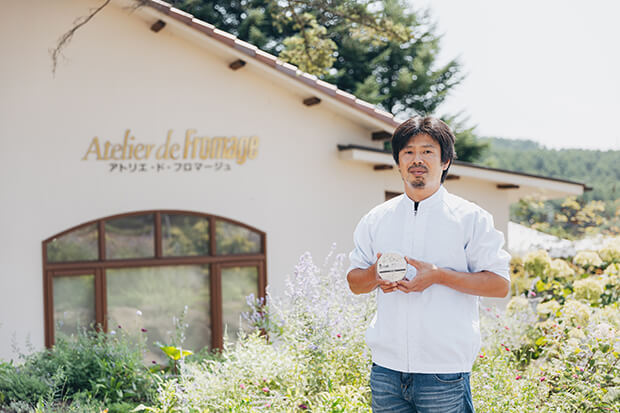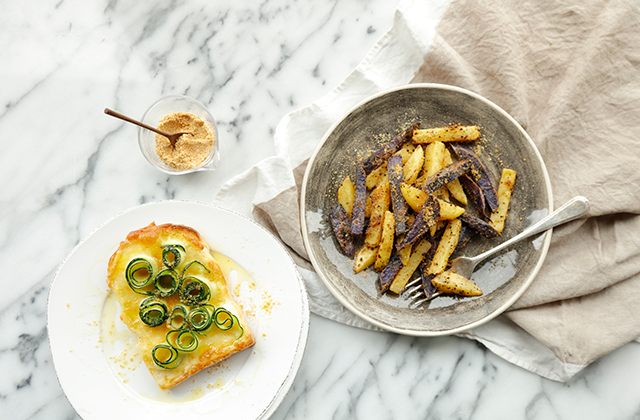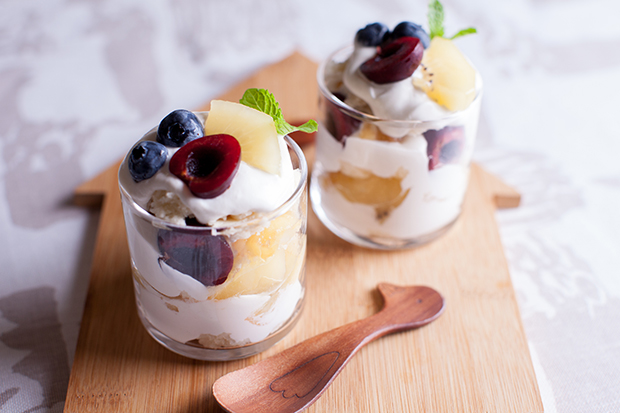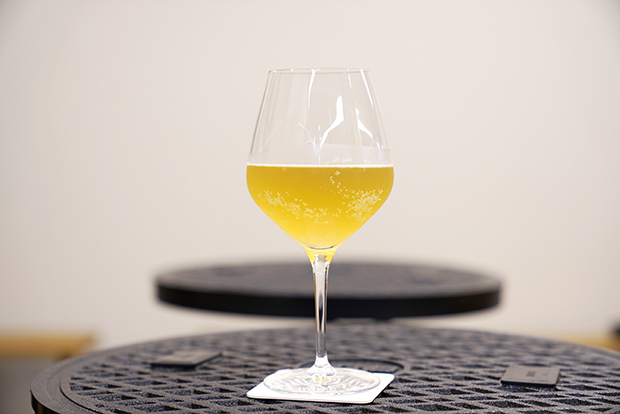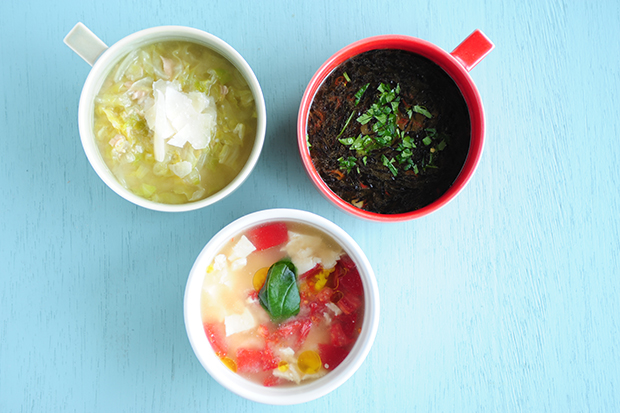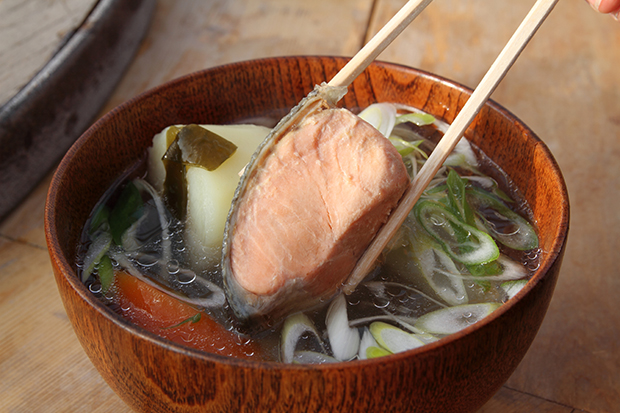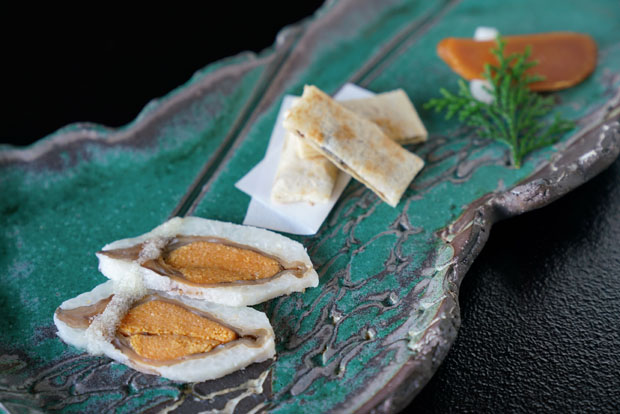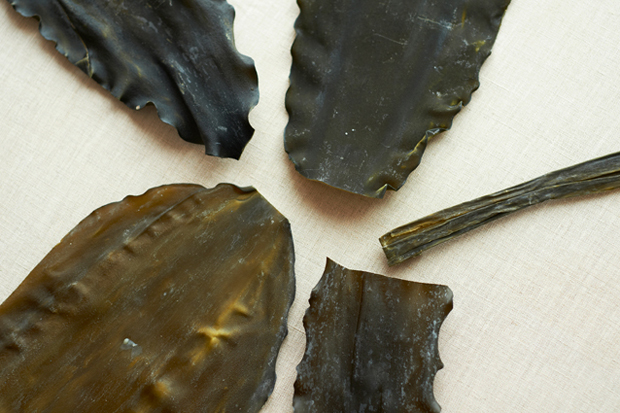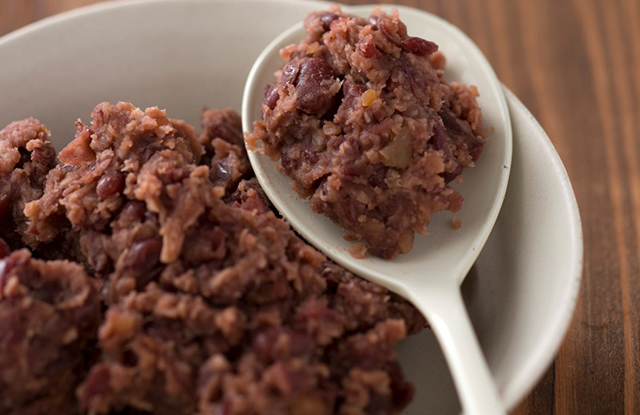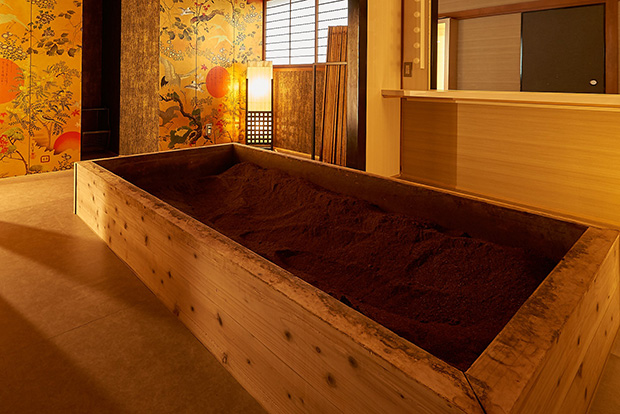Cool Table Settings for a Hot Summer’s Day
Jun 03,2013
Everyday tips for using tableware
Are there any precautions to observe when handling delicate glass or metalware dishes? It would be nice to use them as often as possible, so you want to know how to take proper care of them.
“Glass tends to retain water stains, though they’re not very noticeable on recycled glass,” explains Aya. “If the glass is thin, wipe it carefully. I wipe it with a lint-free linen cloth. Another trick for avoiding water stains is polishing the glass after it dries.
“As for Ando-san’s pewter dishes, they’ll tarnish over time, just like your silver accessories. That gives them their own special character, but if it bothers you, burnish them with a cloth for polishing silver accessories. That will restore their original color. Also, avoid heating them in the microwave or cleaning them with a metal scrubbing brush. Either will cause discoloration because they’ll react with the metal. Similarly, if you place an egg boiled in a hot spring on one of these pewter dishes, the metal will react with the egg due to its high sulfur content. The dish will then become tarnished, and you won’t be able to restore it to its original appearance. As long as you follow these simple precautions, you can have fun serving all kinds of foods in these dishes.”
Like choosing what to wear
Listening to Aya, I realized that the cool, refreshing effect produced by the tableware she had selected emerged from the interplay of many different factors: the colors used, the impression created by different materials, the seasonal mood imparted by the food and plants on the table, a sensation of cold. Aya says it’s like choosing what to wear.
“In summer, you opt for sheer linen fabrics and light, airy accessories. You ask yourself what colors feel cool and what colors to use as accents. One of the wonderful things about Japan with its four clearly demarcated seasons is that you can experience the changing seasons in various aspects of daily life. Coordinating a table setting doesn’t have to be difficult. Go about it in the same way as you choose what to wear. Then I think you’ll find it a lot of fun.”
So it’s no different from deciding what to put on every day. Now that’s reassuring to know. Coming up with your own table settings while capturing the mood of the season sounds like a cool thing to do on a hot summer’s day.
Appendix: The artist in his own words
“Pottery is for the Japanese what jazz is for black people.”
— Ando Masanobu.
During our visit, we also got to talk with artist Ando Masanobu, who had an exhibition on at the Natsutsubaki gallery.
Masanobu was born in the pottery center of Tajimi. He had dreams of a career in the arts, however, and enrolled in art school. There he studied sculpting but never really took to it. He devoted himself to jazz instead.
“I soon hit a serious wall, though. I was Japanese, and I simply didn’t possess the sense of rhythm and ear for music that black people naturally possess. That made me realize that some things just run in the blood.”
Then, after many vicissitudes, he ended up making pottery, a very Japanese art.
“Ceramics are an integral part of Japanese life,” says Masanobu. “In Japan, every member of the family has a set of tableware for their own individual use. That led me to the conclusion that pottery is for the Japanese what jazz is for black people.”
Certainly, the Japanese have always had an affinity for pottery. Masanobu’s creations, though, possess a quality all their own. On being asked about this, he replied:
“There was nothing out there either manufactured or handmade that I would want to use myself. So I had this urge to make niche items — casual wares that I would want to use myself. That’s what inspired me to start making utensils for daily use. The fact I’d studied sculpture and modern art may have had something to do with it. But I’ve always been more interested in the fringe than in the mainstream. I’m into niche stuff. I guess that comes across in my work.”
So what about the silver overglaze pewter dishes used by Aya for her table setting? Pewter is known in Europe as “the poor man’s silver,” and Masanobu was fascinated by it. But antique pewter contains lead, and it can’t be used for daily eating utensils because of the danger of lead poisoning. It therefore occurred to him to replicate it in ceramic. This he did by overglazing pottery with pure silver, though it took him “three years to achieve the desired effect.” The technique he uses involves pressing a slab of clay into a plaster mold called a tatara. It takes more time than using a potter’s wheel, which allows you to produce large quantities with precision. But each piece is distorted in a beautifully organic way. The resulting silver overglaze pewter dishes have a unique feel that matches any meal Japanese or Western.
“People sometimes ask me what I envisioned being served in them. Well, that’s up to the user. They can be used on formal and informal occasions alike. I don’t cook myself, but sometimes when my wife serves something in one of these dishes, it’s like I’m seeing the vessel for the first time. It’s a whole new experience. And when you’ve used these dishes for a while, they take on a nice well-used look. I hope people enjoy how they change over time — and find stunning ways to combine them.”

Natsutsubaki
A gallery in a remodeled traditional home located in a residential neighborhood in the Kamimachi district of Tokyo’s Setagaya Ward. On stepping through the gate, you’re greeted by a beautiful garden, an elegant building, and, inside, housewares and utensils carefully curated by proprietor Eto Aya.

